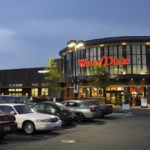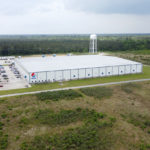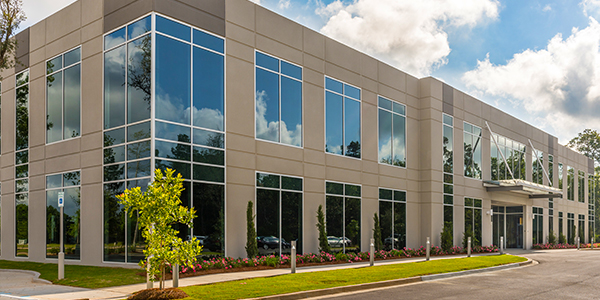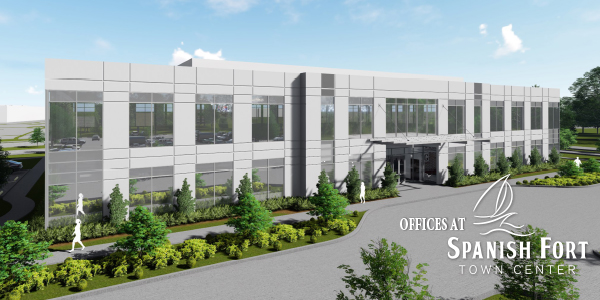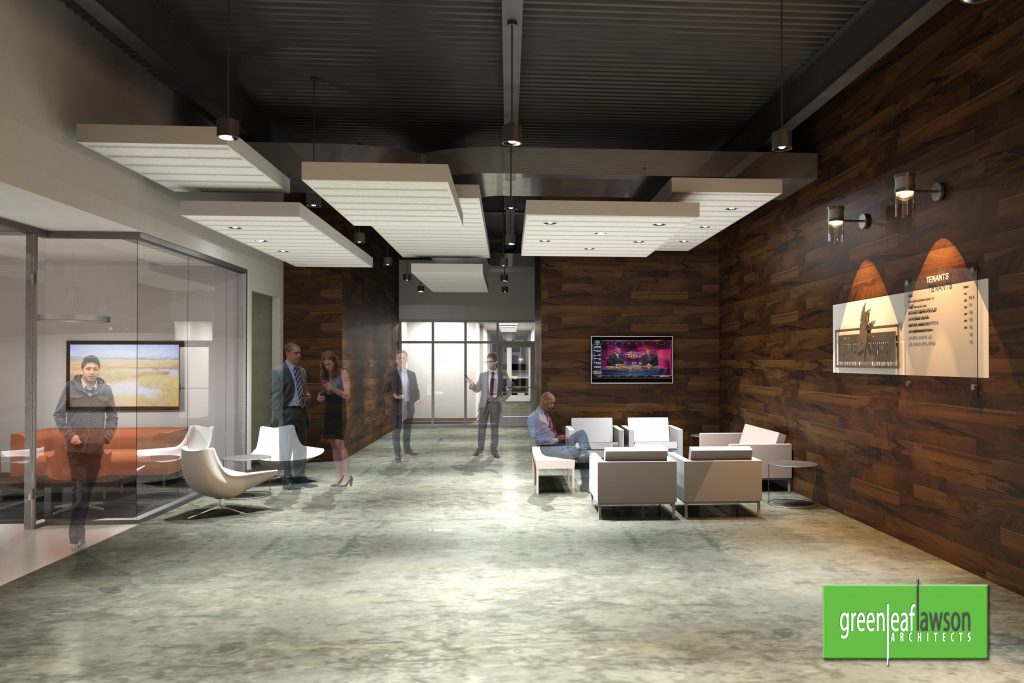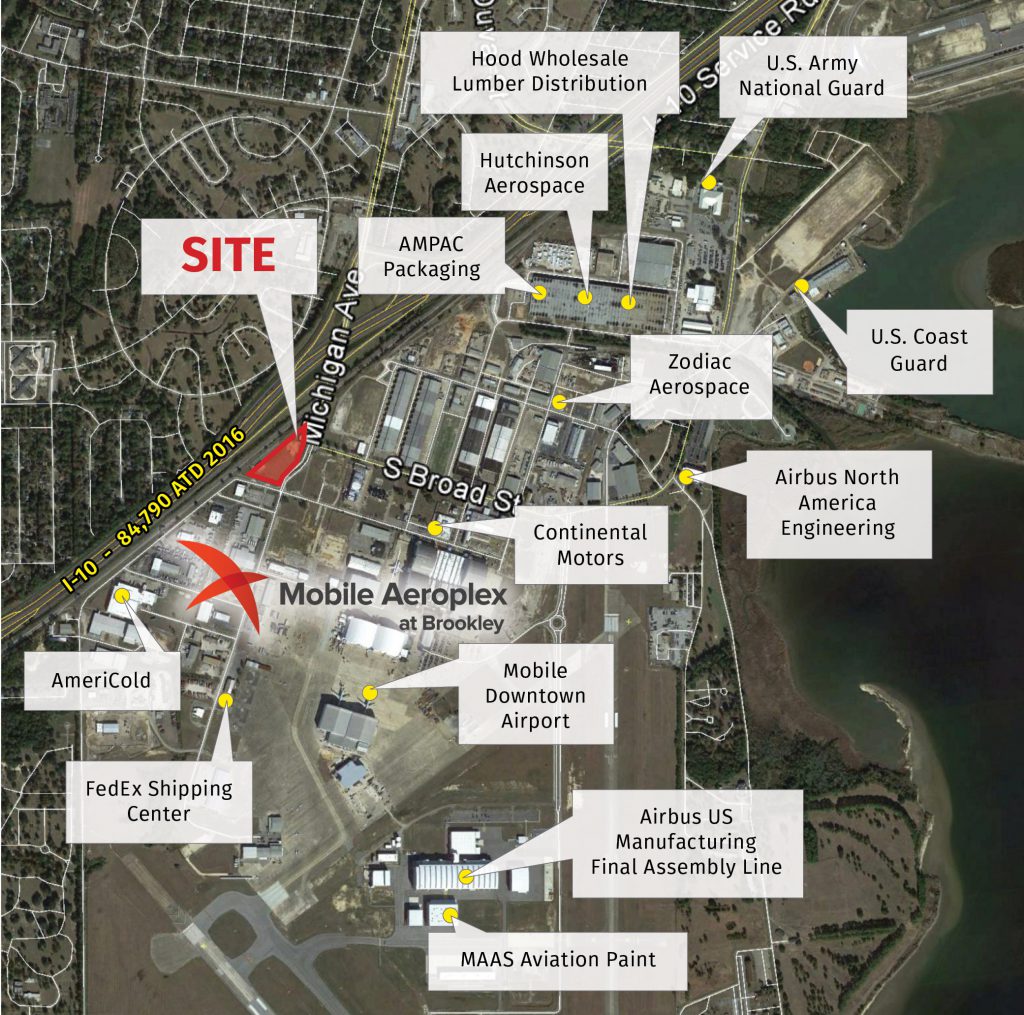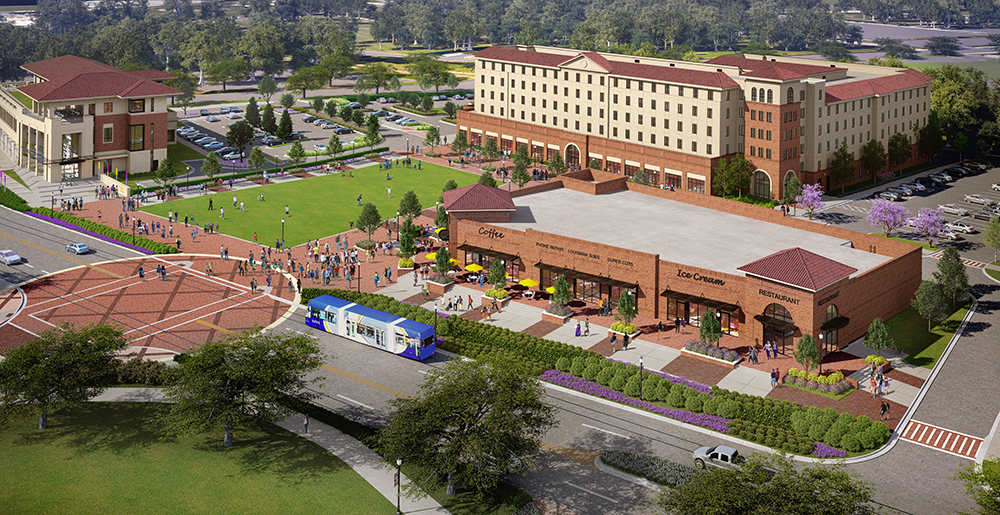We are Evolving!
Stirling Properties celebrates 20th Annual Stirling Honors.
Stirling Properties celebrated its 20th Annual Stirling Honors last Friday at the beautiful NOPSI Hotel in New Orleans. The yearly event recognizes and distinguishes the successes of Team Stirling and the company over the past year. A Commercial Celebration was also held to honor the Commercial Brokerage Division and to grant Commercial Production Awards.
To kick off the morning, Dancing Grounds performed an outstanding tribute to New Orleans in honor of the city’s 300th Anniversary with African drums and a second line rendition. The overarching theme of the day was EVOLUTION. Much like the City of New Orleans, Stirling Properties—and the entire commercial real estate industry—has evolved over the years to keep pace with the changing landscape.
Stirling Properties’ President & CEO, Marty Mayer, served as the event emcee for the day and encouraged team members to think about how technology and industry advancements will continue to impact the company moving forward. “Our industry is changing, the way we communicate and position ourselves is changing, technology is changing… and as a result, the way we do business is evolving. It’s imperative that we are proactive and adaptable,” said Mayer.
He went on to say, “We don’t know exactly what the future holds, but we can be certain it will hold significant transformation. I challenge each of you to be creative and explore new and innovative opportunities. We will need fundamental change to get from where we are now to where we need to be—and it will take all of us working together as a team to get there.”
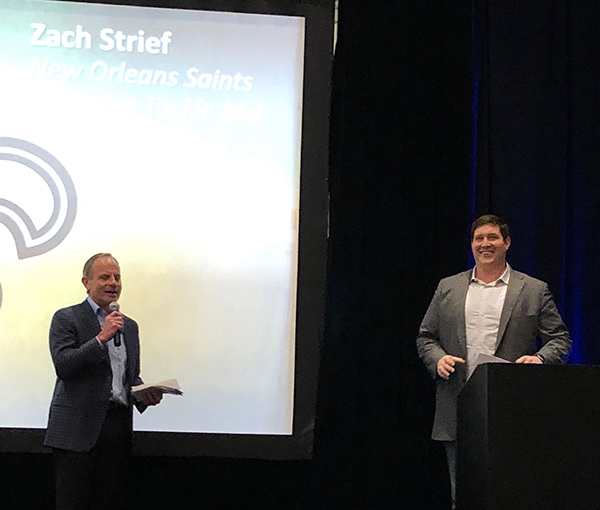
Zach Strief, Former New Orleans Saint
Former New Orleans Saint, Zach Strief, closed out the program with an inspirational message on the importance of supporting and giving back to our community. He shared his love for New Orleans and his passion for philanthropy through numerous local nonprofit organizations including Café Reconcile, Team Gleason, and Dream Big Foundation. At the end of his presentation, Stirling Properties presented Strief with a $5,000 donation in support of Team Gleason.
The Team Stirling awards ceremony was held in the afternoon. Jan Kinard, Roslyn Rogers, and Jeff Barnes were acknowledged as recipients of Stirling Properties’ most prestigious honor, the Exceeding Excellence Award, presented for extraordinary employee actions that exemplify the values necessary to further the success of the company. Exceeding Excellence Award recipients are nominated and selected by their co-workers. Commercial Division Award recipients received recognition for Bronze, Silver, Platinum, Diamond, and Ruby production levels based on individual adjusted gross commissions from 2017. Special acknowledgment was also given to Rhonda Sharkawy, Senior Retail Leasing and Development Executive in New Orleans, for achieving the Top Commercial Producer Award—this is the 4th consecutive year she has earned this accolade.
Thank you to everyone who joined us for a great day of inspiration, company insight, delicious food, and camaraderie!
COMMERCIAL DIVISION AWARDS
Ruby Award
Diamond Award
Platinum Award
Gold Award
Silver Award
Bronze Award
- DCIM100MEDIADJI_0608.JPG
Also recognized were employees and agents who achieved special anniversaries with the company. Service Awards were given for 5, 10, 15, 20, 25, and 35-year milestones.
SERVICE AWARDS
5 Years of Service: Mike Alexander – Lafayette, Karen Bachemin – Covington, Mac Bauer – New Orleans, Ryan Juneau – Baton Rouge, Samantha Marshall – Covington, Karen McElroy – Shreveport, Stacy Odom – Shreveport, Mel Sayler—Covington, Mike Seago – Gulfport, Denise Tatum – Baton Rouge, Kelly Vargas – Westpark, Kelly Wellmeyer – Covington, Robin Zemke – New Orleans
10 Years of Service: Seth Citron – Lafayette, Kayla Davis – Covington, Joe Gardner – New Orleans, Justin Landry – Covington, Reid Richardson – Covington, Gaines Seaman – New Orleans, Townsend Underhill – Covington
15 Years of Service: Will Barrois – Mobile, Mike McDougall – Covington, Cyndie Quave – Covington, Sonia Shoemaker – New Orleans, Ashlee White – Covington
20 Years of Service: Beth Cristina – New Orleans and Rhonda Sharkawy – New Orleans
25 Years of Service: Paul Mastio – Covington and Harold Staub – New Orleans
35 Years of Service: Grady Brame – Covington
Suburban Office Space In Short Supply for Baldwin County
I recently attended a commercial real estate conference held in Birmingham, Alabama, where over 500 commercial brokers, developers, lenders, politicians, and business leaders gathered to learn of current trends in commercial real estate, as well as to gain a better understanding of how certain factors have and will continue to shape the future of Alabama. Prevalent themes centered on the rapid growth of the Gulf South region and the evolution of our industry—with progressive growth and opportunities on the horizon for the South Alabama market, notably, changes in the office market space.
Baldwin County continues to be the fastest growing county in Alabama with 49% population growth since 2000. The University of Alabama’s Center for Business and Economic Research (CBER), projects that the Daphne-Fairhope-Foley metro population will increase 43.6% over the next 20 years, and is anticipated to become the 4th largest MSA in the state by 2040. The recent arrival of the Walmart distribution center and Amazon fulfillment center, combined with the expected growth of companies such as Airbus and Austal, the continued success of the Port of Mobile, and the addition of the new bridge over Mobile Bay all point towards a bright future for the South Alabama region.
But as the population continues to increase throughout Baldwin County and new businesses are attracted to the region, the nonexistence of Class A office space outside of Mobile’s CBD is evident. The product simply doesn’t exist. The lack of available inventory can indeed be frustrating—not only to national commercial brokers seeking office space options for clients but to local economic developers tasked with recruiting industry and commerce to the area.
According to Lee Lawson, President and CEO of Baldwin County Economic Development Alliance, “The lack of available professional office product in Baldwin County is a critical difference maker in converting economic development opportunities to successes. We continue to work with our partners both private and public to create the environment where economic development opportunity conversions can happen successfully. In the white-collar office arena, existing space in the marketplace creates a higher conversion opportunity ratio for new high-paying jobs in our community.”
Even more challenging would be to locate a Class A office building that meets the preferences of today’s changing workforce. There are certainly niche markets, such as Downtown Fairhope, that are starting to support a higher-end office product but on a smaller scale. Other options for office space along the Eastern Shore of Mobile Bay, including Spanish Fort, Daphne, Fairhope, and Point Clear are primarily made up of smaller, older buildings, some of which are becoming antiquated. Office space needs for those users not willing to commute to broader markets such as Mobile or Pensacola are often met by converting retail space to office use or working from a home office.
On pace with national trends, office building features are evolving, with an emphasis on more open space for collaboration and shared-office facilities in high-tech buildings. Suburban locations with urban-type amenities are highly favored among the substantial millennial demographic shift and will create even more demand in the next few years as the age group continues to mature. Another popular suburban office trend is the mixed-use, live-work-play development model with walkability to nearby restaurants, retailers, and residential services.
To expound upon the shifting trends of suburban office space and the lack of Class A inventory in the area, Stirling Properties has recognized a significant need to provide for quality office space. We are currently underway on pre-leasing efforts for The Offices at Spanish Fort Town Center, a proposed 2-story, 44,000-square-foot, Class A office building strategically positioned along the I-10 corridor in Spanish Fort. This future development is in the bullseye of major growth in the county and provides convenient access to both Mobile and Pensacola. Not only will this new office building help to attract corporate and professional users to the area, but the new construction and design also allow the incorporation of the emerging styles that will change the way office space is utilized.
The Offices at Spanish Fort Town Center will include state-of-the-art construction such as efficient floor configurations, allowing tenants the ability to design space to incorporate innovative ways to potentially reduce square footage required, therefore, reducing rental expenses. Other features include flex space to encourage and promote collaboration among employees; flexibility in hours of operation, as the trend for 24/7 “shift” use evolves; and ample, free surface parking, resulting in significant cost savings when compared to paid parking typically associated with CBDs. It will also benefit from high interstate visibility and signage opportunities.
The office building is within walking distance of numerous on-site amenities associated with Spanish Fort Town Center, a mixed-use development consisting of retail, restaurants, and residential facilities. An on-site Container Park is also planned for 2018, with exciting new restaurant vendors.
Our region is quickly emerging as a top destination for business and corporate growth and relocation. Baldwin County has been named #1 in the state of Alabama for incoming business investment for the 2nd year in a row, and #1 in the state for Workforce Talent Attraction. If we are going to compete with other top markets—and win—we must be able to provide quality office space in our suburban markets.
Stirling Properties is excited to embrace and support the growth of Baldwin County and our region. With offices spanning the Gulf South, our team is well-equipped to recognize and execute strategic commercial real estate opportunities—from Louisiana to the Florida Panhandle.
For additional information, please contact me at 251.375-2496 or jbarnes@stirlingprop.com.
Tax Reform & Real Estate… It’s a good time for our industry
The Tax Cuts and Jobs Act passed in December and several of these provisions will take effect in 2018. Many individuals have already benefited from the new tax law by seeing their recent paychecks increase. We believe this tax reform will have a similar positive impact on the real estate industry. Tax reform can be a very complicated—and tedious—topic so we’ve highlighted some of the implications for real estate owners, small business owners, and individuals. We’ll preface by saying this is our interpretation of the law, prior to the regulations being written and what we think Congress intended by the text of the law.
Initially, many of us in the real estate industry were very concerned about tax reform and the negative aspects that were being considered. The International Council of Shopping Centers (ICSC), responded by forming a committee consisting of executives and tax professionals across our industry to garner input to deploy lobbying efforts. Stirling Properties played a significant part in providing consistent feedback that guided ICSC’s lobbying efforts. Several executives in our company, including Marty Mayer, Townsend Underhill, Jimmy Maurin, Will Barrois, and me, were active in lobbying congress, and as noted below, these efforts were successful. Together, we were able to quickly respond to aspects of the tax proposal that were detrimental to the real estate industry and offer solutions that would benefit our real estate holdings and the business as a whole. We’ve compiled a brief overview of some of the changes.
Real Estate Business Owners and Investors
- Expanded Bonus Depreciation: Items that were previously required to be capitalized over 15 years (subject to 50% bonus depreciation) are now eligible for a 100% deduction in the year of completion.
- Examples of these items include parking lots, landscaping work, pylon lighting, etc.
- This provision begins to phase out after 5 years.
- Business Income Deduction: 20% of the taxable income generated from a business could be eligible to be deducted from taxable income pending multiple limitations.
- For example, if your share of taxable income from a business you own is $100,000, the first $20,000 may be eligible for a deduction, thus lowering taxable income to $80,000.
- Business income from pass-through entities like partnerships and LLCs will still be taxed at the new lower individual rates.
- Historic Preservation and Rehabilitation Tax Credit: The 20% credit for renovating certified historic structures remains in place but must be taken over a 5-year period as opposed to being fully deductible in the year of completion under the existing law.
- C-Corporations Tax Rate: The corporate tax rate under the new law is 21% as compared to 35% under the existing law.
- Property Tax Deduction: Still in place for real property trade or businesses including rental properties.
- Interest Expense from Loans: Businesses will still be eligible to deduct the interest expense from the debt incurred if its gross receipts are less than $25 million.
- The vast majority of commercial real estate in the Gulf South region would continue to be eligible to deduct interest.
- 1031 Exchanges: Real estate will still qualify to receive 1031 treatment.
- Capital Gains Rates: Remained unchanged at 0%, 15%, and 20% depending on income levels.
- Carried Interest: The new law requires a 3-year holding period to qualify for capital gains treatment as opposed to a 1-year holding period under the current law. This was a “win” for real estate as the original proposal was for carried interest to be taxed at ordinary rates.
Individuals
- Tax Rates: Almost every bracket has been widened and lowered with the top bracket being lowered from 39.6% to 37% thru 2025.
- Standard Deduction: Single filer’s standard deduction increased from $6,350 to $12,000. Married filer’s standard deduction increased from $12,700 to $24,000.
- Personal Exemptions: Taxpayers will no longer be eligible to deduct the $4,100 per dependent.
- Child Tax Credit: The child tax credit increased from $1,000 to $2,000.
- State and Local Taxes: Deduction under the new law is capped at $10,000.
- Estate Tax Exemption: Doubled to $11.2 million for single filers and $22.4 million for married couples.
At the end of the day, the real estate industry appears to have fared well in the Tax Cuts and Jobs Act. Some of these items are pending a technical corrections bill and additional clarification, but the expanded bonus depreciation and business income exclusion make being a real estate investor an enticing proposition. For investors looking to deploy capital in a tax advantageous investment, real estate is an appealing option that will rival alternative investments. We believe tax reform will provide a stimulus for real estate investment over the next five years.
We will follow up with more in-depth coverage of some of these items in the future, as well as how Stirling Properties is adapting to take advantage of this new opportunistic landscape.
The information contained herein is intended for information purposes only. Individuals should seek advice directly from a qualified professional before making any decisions or taking any action that might affect your personal finances or your business. Stirling Properties is not responsible for any investment or monetary decisions made based on the information provided above and is not a tax advisor. The information provided above was done so with the perceived intent of the legislation and not based on the actual regulations. The actual regulations could yield significantly different results.
Consumers Still ♥ Brick-and-Mortar
Valentine’s Day has come and gone—and it was retailers who were feeling the love this year. According to the National Retail Federation (NRF), early sales projections leading into the holiday were estimated to reach a near record of $19.6 billion, an increase from $18.2 billion last year. U.S. consumers individually were expected to spend an average of $144 on Valentine’s Day, also up from last year’s $136.57. The NRF reports these retail numbers are the second-highest in its survey’s 15-year history. Additionally, the majority of Valentine’s Day retail sales were expected to be made in a physical store, including department stores, discount stores, specialty stores, florists, or local small businesses.
This healthy holiday spending is reflective of the upwards trend across the U.S. over the past year. The 2017 official Holiday Season (November & December) rounded out with total retail sales estimated to be more than $690 billion, a whopping 5.5% aggregate increase over 2016, indicating the strongest holiday season growth rates since 2010. Shoppers spent an average of $842 on gifts and holiday-related items versus $714 in 2016. Furthermore, 85% of total sales were by retailers with a physical presence.
These statistics confirm and reiterate that the retail real estate industry is thriving, and the rise of ecommerce hasn’t changed that. Yes, we’ve read the bloated headlines about “the retail apocalypse,” “the death of shopping centers,” and “the Amazon effect on retail” but the real story is that ecommerce sales account for less than 12% of total retail sales. It is also estimated that over half of those online sales actually go to brick-and-mortar retailers. Even though ecommerce sales are growing considerably, online giants such as Amazon still only account for a small percentage of the overall market.
As we saw this past Valentine’s Day and during the 2017 Holiday Season, consumers prefer to shop in-store. In fact, 90% of holiday shoppers made purchases from retailers with a physical presence. In the retail game, successful stores are actually using ecommerce to their benefit, giving consumers more options and convenience to make their purchases. Omnichannel buying options, like click-and-collect and click-and-ship, are enhancing the brick-and-mortar shopping experience and boosting sales at physical stores.
To add even more sentiment to your post-Valentine’s Day heart: In the past year, we saw more retail store openings than closures and store openings are expected to outpace closures over the next 5 years (according to Zebra Technologies-IHL Group study). In 2017, the retail market had 4,080 net store openings.
And… To put the icing on the heart-shaped cupcake, retail sales are expected to continue to increase for the next several years. Many experts forecast that overall retail sales will rise between 3.8% and 4.4% in 2018 over last year. That certainly warms my heart.
On track with the rest of county, the retail landscape here in the Gulf South region is solid. Occupancy rates in our centers remain high. Retailers are reporting strong foot traffic and higher-than-anticipated sales numbers—especially those who are learning to adapt to consumer demands and offering unique shopping experiences. We are also attracting and welcoming many new-to-market stores and restaurants.
So, on Valentine’s Day, today, and every day, let’s remember to advocate for and show a little love to our brick-and-mortar retail friends.
Marty Mayer
President & CEO
Mobile area primed for future growth
Mobile Aeroplex at Brookley establishes surrounding area as prime position for sustained growth in the commercial real estate industry.
Mobile, Alabama, and its surrounding region are experiencing unprecedented growth due to a low cost of doing business, diverse commerce base, intermodal transportation options, and quality lifestyle. Businesses and corporations are flocking to the area, bringing with them an increased workforce and a plethora of new economic opportunities.
One specific area of note is the positive trend in the market surrounding Brookley field. Economic activity is thriving in this area, and an influx of significant commercial real estate development is expected within the next few years. With the advent of numerous new businesses and the resulting inflow of employees and their families, this is a natural site for the emergence of convenience stores, gas stations, hotels, restaurants, and much more in the near future.
Most of the area growth is spearheaded by the recent expansion of Mobile Aeroplex at Brookley. Spread over 1,650 acres in southwest Mobile, the Aeroplex is now the largest industrial and transportation complex in the region, combining rail, road, and water along with a state-of-the-art airport. Currently, more than 75 companies employing some 3,600 people are housed in the complex, including Airbus U.S. Manufacturing Facility, Airbus Engineering, FedEx, Signature Air Support, Safran USA, Continental Motors, VT MAE, MAAS Aviation, among many others—and it’s growing daily.
Late last year, Airbus announced its largest single deal to build aircraft for Indigo Partners, whose airline portfolio includes Frontier, JetSMART, Volaris, and Wizz Air. The contract includes 430 aircraft and is valued at $49.5 billion. Airbus was also selected by Delta Air Lines to manufacture as many as 200 jetliners, with delivery of the first 100 beginning in 2020.
Airbus and Bombardier also announced an agreement to form a partnership to build Bombardier’s C Series passenger jets. This deal could result in the addition of a second aircraft assembly line at Mobile Aeroplex, creating a proposed 400 to 500 more direct jobs in the area, and would represent an investment of hundreds of millions of dollars. Reports also estimate that establishing “the necessary C Series facilities” would create 1,900 direct jobs, 1,000 indirect jobs, and 3,000 induced jobs during construction.
In December, the Mobile County Commission approved its share of incentive packages for Safran USA and Continental Motors. This process will move forward plans for Safran—a new tenant at Brookley—to open a new manufacturing operation. The company plans to invest $1 million in starting the operation and will hire approximately 20 employees. Continental Motors is planning a $60 million investment to build an entirely new facility to house its existing operations at the Aeroplex.
Furthermore, this thriving industrial park has the potential of becoming Mobile’s new international airport—a proposal to move Mobile Regional Airport from west Mobile to Brookley field is gaining steam. This move would completely change the landscape of the area by placing the airport at the center of our region’s economic activity. With the recent support of Congressman Bradley Byrne and many other local community leaders, a feasibility study could be underway soon. “If we undergo a feasibility study and the study shows that Brookley is a viable airport for commercial activity, then there is no reason why we should not entertain that,” said Chris Curry, Executive Director of the Mobile Airport Authority, which oversees the Mobile Downtown Airport, Mobile Regional, and the Aeroplex at Brookley Field.
The Mobile Aeroplex at Brookley is already home to many of the world’s leading aerospace suppliers, and major transportation companies, and it continues to expand every day. It is serving as a major catalyst for surrounding area growth and investment in the region. But people living and working here currently have limited options for eating, shopping, and other needed services. Because of this, we will undoubtedly see an increase in the demand for commercial amenities and new developments such as retail and restaurants.
The time is right for commercial growth in the area surrounding Mobile Aeroplex at Brookley. Anyone with interest in getting in on the front end of a burgeoning market should pay close attention to this space. The growth is starting small, but it will certainly progress quickly over the next few years. I look forward to being a part of the historical evolution of Mobile!
Matherne’s Market to be Retail Anchor Tenant in LSU’s Nicholson Gateway
LSU announced today that Matherne’s Market will be the retail anchor tenant in the university’s new Nicholson Gateway Development Project, currently under construction on a 28-acre site of the Nicholson Drive Corridor, between West Chimes Street and Skip Bertman Drive.
Matherne’s Market will occupy 17,063 square feet of the roughly 50,000-square-foot retail component of Nicholson Gateway, which will primarily serve residents of the project, the LSU community and visitors.
“Matherne’s Market is an ideal addition to Nicholson Gateway,” said Steve Waller, LSU assistant vice president of residential life and housing. “We are excited to offer our new student residents access to a well-established local grocery store, just steps from their apartment doors. An on-site grocer is an amenity that will enhance the Nicholson Gateway living experience for the more than 1,500 students who will call this new space home.”
Tony Matherne, co-owner of Matherne’s Market, said, “We are very excited to bring our new Matherne’s Market concept to the Nicholson Gateway project at LSU! This Market will have the same offerings and ‘feel’ as our downtown location. We believe that our new store format, with a focus on fresh, specialty and prepared foods, catering and online shopping, with pickup and delivery options, highlights our company strengths and delivers the products and services that our customers want and need. Although our new format is smaller in size than our previous Baton Rouge supermarkets, this will be a full-service market that will provide the residents, students, faculty and staff, and visitors to LSU, as well as the residents and businesses of the surrounding area, with a clean, friendly and inviting shopping experience.”
Matherne said, “Our over 35 years of retailing experience gave us the confidence to downsize the footprint of the store while improving the customer’s experience. Our carefully selected product assortments provide great variety in all product categories, while also allowing us to improve upon the shopping experience for customers. Our new format is efficient for customers to shop for the items they want with the convenience they demand.”
The LSU Property Foundation, an affiliate of the LSU Foundation, is facilitating Nicholson Gateway. Stirling Properties is serving as the retail developer and leasing broker on the project, working with the prime developer, Georgia-based RISE, which specializes in student housing. Stirling Properties will also handle ongoing retail property management.
Slated for completion by this fall, Nicholson Gateway will include 763 units of apartment-style housing for over 1,500 students, with associated residential support spaces, such as lounge spaces, study areas, community gathering places and retail food service. The project, focused on the largest underdeveloped tract of university-owned property that is adjacent to the campus core, will turn what has traditionally been the back of the campus into an exciting new gateway district.
For retail leasing information, please contact Dottie Tarleton at dtarleton@stirlingprop.com or 225-922-4253 or Rhonda Sharkawy at rsharkawy@stirlingprop.com or 504-620-8145.
For student leasing information, visit lsu.edu/nicholson. Information about the overall project is available at nicholsongateway.com.


